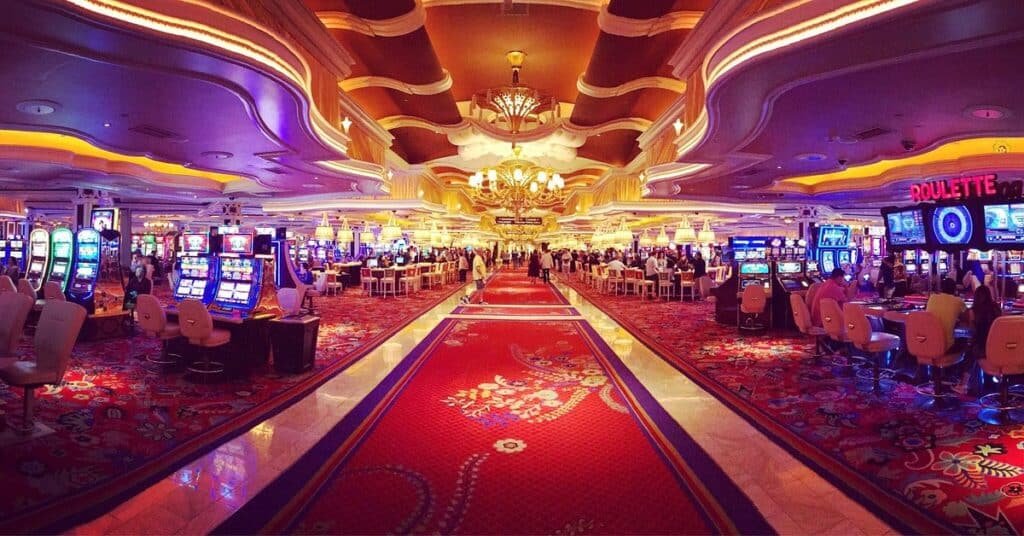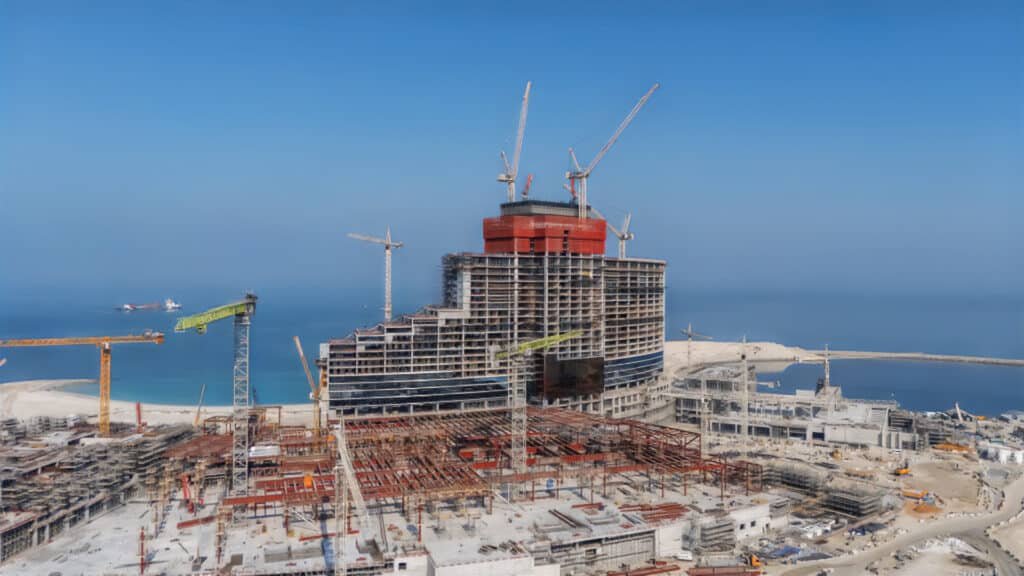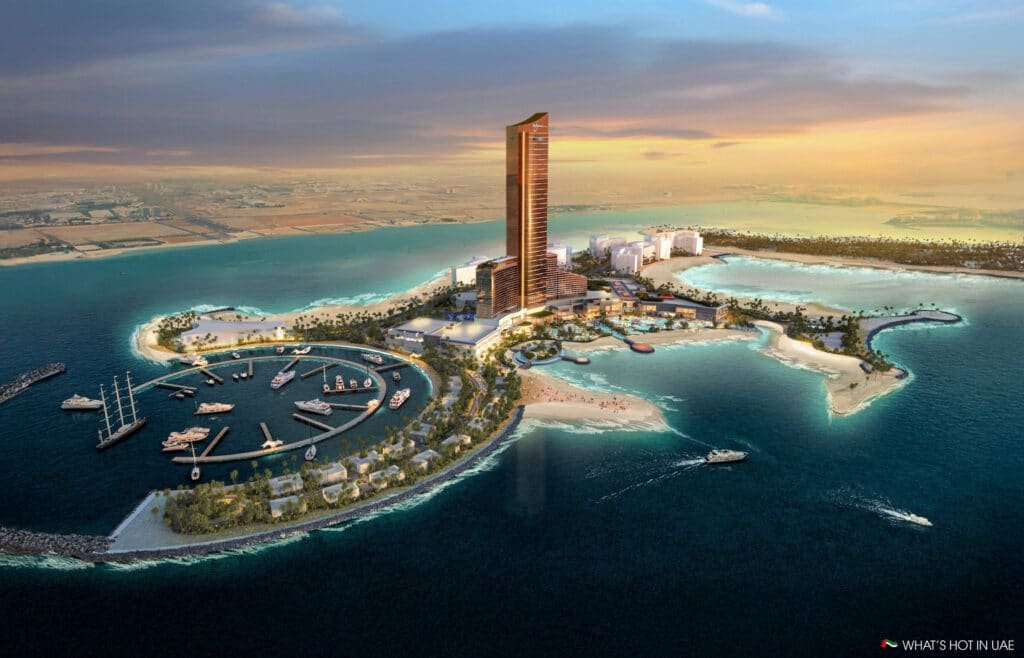The United Arab Emirates, a global hub for luxury tourism and finance, is making a calculated, multi-billion-dollar entry into a new frontier: integrated casino gaming. Spearheading this monumental shift is the $3.9 billion Wynn Al Marjan integrated resort in Ras Al Khaimah, a project poised to anchor a market with a projected gross gaming revenue (GGR) of $3 to $5 billion annually. For investors, financial analysts, and hospitality executives, this rapid development presents both a landmark opportunity and a complex new landscape to navigate. The core challenge is the absence of a single, comprehensive resource that connects the dots between the groundbreaking new regulations, the specifics of the flagship UAE Gaming Market project, and the broader market dynamics.
This article serves as the definitive investor and analyst briefing on the UAE’s strategic gamble on integrated resorts. We will provide a detailed breakdown of the new regulatory landscape governed by the General Commercial Gaming Regulatory Authority (GCGRA), conduct a deep dive into the Wynn Al Marjan project, deliver a full market analysis of the revenue potential and competitive pressures, and explore the future outlook for integrated resort development across the Emirates.
The New Regulatory Landscape: Understanding the GCGRA and the Legalization of Gaming
The UAE’s move into the gaming sector is not a haphazard decision but a meticulously planned strategy underpinned by a new federal legal framework. This section demystifies the regulations enabling this new market, detailing the establishment and crucial role of the General Commercial Gaming Regulatory Authority (GCGRA) and clarifying the strategic shift that makes licensed gaming possible.
A brief timeline of these pivotal events illustrates the deliberate pace of this market’s creation:
- January 2022: Wynn Resorts announces plans for an integrated resort in Ras Al Khaimah.
- September 2023: The UAE establishes the General Commercial Gaming Regulatory Authority (GCGRA) as the federal regulator.
- October 2024: Wynn Resorts is awarded the UAE’s first-ever commercial gaming operator’s license by the GCGRA.
What is the General Commercial Gaming Regulatory Authority (GCGRA)?
The General Commercial Gaming Regulatory Authority (GCGRA) is the federal body established to introduce and manage a world-class, socially responsible gaming industry in the UAE. Its core mandate is to create a robust regulatory framework that ensures the integrity of operations, protects participants, and aligns with the nation’s economic goals. Led by seasoned industry veterans, including Executive Chairman Jim Murren, the GCGRA is responsible for all aspects of licensing, regulation, and oversight of commercial gaming. The authority’s vision extends beyond a single project; Murren has publicly stated he expects up to four integrated resorts in the UAE in the coming years, signaling a long-term, nationwide strategy[1].
The Shift to an ‘Integrated Resort’ Model
Crucially, the UAE has strategically opted for an “integrated resort” model rather than permitting standalone casinos. This approach embeds gaming facilities within larger luxury hospitality and entertainment complexes, featuring high-end hotels, fine dining, retail, and other non-gaming attractions. This model aligns perfectly with the UAE’s broader economic diversification and premium tourism strategies. By focusing on the total guest experience, the integrated resort model helps de-emphasize the gaming component in public perception while maximizing economic impact. It attracts a wider demographic of visitors, increases the average length of stay, and creates a powerful synergy with the existing world-class tourism infrastructure, differentiating the UAE from more gaming-centric hubs like Las Vegas or Macau.

Project Deep Dive: Wynn Al Marjan, The $3.9B Anchor of the Ras Al Khaimah Casino Market
At the heart of the UAE’s gaming ambitions lies Wynn Al Marjan, the flagship project that will serve as the blueprint for all future developments. With a staggering investment of $3.9 billion, this integrated resort is not just a hotel with a casino; it is a statement of intent. Set to open in early 2027, the property is a joint venture between Wynn Resorts and RAK Holding and is strategically located on the pristine, man-made Al Marjan Island in Ras Al Khaimah. Wynn Resorts anticipates the project will add approximately $345 million of EBITDAR (cash flow and management fees) to its portfolio, underscoring its financial significance[1].
Key Project Specifications and Timeline
The financial and operational scale of Wynn Al Marjan is immense, reflecting the high stakes of this venture. Key details for investors include:
- Total Investment: $3.9 billion.
- Ownership Structure: A joint venture in which Wynn Resorts holds a 40% stake.
- Location: Al Marjan Island, Ras Al Khaimah, approximately 50 minutes from Dubai International Airport.
- Target Opening: Early 2027.
- Financial Commitment: As of the third quarter of 2025, Wynn Resorts had contributed a total of $835 million in cash to the project, including a $93.9 million contribution during that quarter alone[1].
These figures demonstrate a deep and ongoing capital commitment, signaling strong confidence from one of the world’s premier luxury resort operators.
Significance of the First Commercial Gaming License
In October 2024, Wynn Resorts secured the UAE’s first commercial gaming license from the GCGRA, a milestone that provides a powerful first-mover advantage. This exclusivity allows Wynn to establish its brand as the premier gaming and luxury destination in the region, capture foundational market share, and set the operational and service benchmarks for future competitors. According to Wynn Resorts CEO Craig Billings, the company expects to command “100 per cent market share early on”[1]. This initial monopoly, even if temporary, is a critical strategic advantage, enabling Wynn to build a loyal customer base and refine its operations before any competition emerges.
Analyzing the $5 Billion UAE Gaming Market: Projections, Competition, and Strategy
For investors, understanding the market’s potential size, competitive dynamics, and the lead operator’s strategy is paramount. Executive commentary from Wynn Resorts provides a clear, data-driven window into these critical factors. The company’s internal analysis projects a robust market, with a clear-eyed view of future competition and a phased plan to dominate the landscape from day one.
Market Size and Revenue Projections
Wynn Resorts is modeling its strategy on a market projected to generate between $3 billion and $5 billion in annual Gross Gaming Revenue (GGR). CEO Craig Billings has expressed confidence in these figures, noting that “there probably is some conservatism in those estimates” given the current lack of announced competition[1]. The foundation for this optimism is strong. Billings describes the UAE as “a very robust local market, a very high GDP per capita” with excellent road infrastructure connecting the emirates. These strong economic fundamentals, combined with the region’s status as a global travel hub, provide a solid base for a thriving gaming industry.
The Emerging Competitive Landscape
While Wynn Al Marjan will be the sole operator at launch, the company is not planning in a vacuum. Craig Billings confirmed that Wynn’s financial models are “factoring in two incremental competitors” to emerge over time[1]. This aligns with, and is perhaps even more conservative than, the GCGRA’s vision. GCGRA Executive Chairman Jim Murren has suggested the market could eventually support “up to four integrated resorts”[1]. This managed approach to competition, overseen by a single federal regulator, suggests a stable and controlled market evolution rather than a chaotic free-for-all, which is a positive signal for long-term investors. Wynn’s initial monopoly gives it a significant head start to mitigate future Wynn Resorts market share risk.
Wynn’s Go-to-Market and Marketing Strategy
Wynn Resorts is deploying a sophisticated, two-phased marketing strategy tailored to the luxury market. The initial phase, which Billings confirms has “been going on for quite some time,” is focused on “one-to-one marketing and player engagement”[1]. This highly targeted approach is aimed at building relationships with high-value clients and key players well before the doors open. The second phase will be a broader “mass marketing and mass communication” push, which Billings expects to roll out “as 2026 progresses”[1]. This strategic sequencing ensures that a foundational VIP customer base is secured early, while a larger public-facing campaign builds widespread brand awareness and anticipation closer to the grand opening.

Investment Outlook: The Future of Casino Gaming in Dubai and Beyond
While Ras Al Khaimah is the launchpad, the long-term investment outlook for the UAE gaming sector extends across the nation. The GCGRA’s federal mandate and its chairman’s comments about multiple resorts strongly indicate that this is not just a Ras Al Khaimah initiative but a national economic strategy. This opens the door to future integrated resort development in other emirates, with Dubai being the most anticipated and speculated-upon location.
Will Dubai Get a Casino?
The question of the future of casino gaming in Dubai is one of the most significant for investors. While no official announcements have been made, the establishment of a federal gaming authority makes such a development more plausible than ever before. Dubai’s world-renowned tourism brand, its existing luxury hospitality infrastructure (with major operators like Caesars and MGM already present with non-gaming properties), and its superior global connectivity make it a prime candidate for an integrated resort. A casino in Dubai would fundamentally alter the competitive dynamics of the regional market, creating both immense opportunity for its operator and a significant new challenge for Wynn Al Marjan.
Key Risks and Market Entry Challenges for Future Operators
Despite the immense potential, investors must remain cognizant of the risks and challenges inherent in this nascent market. For Wynn and any future competitors, key considerations include:
- Regulatory Evolution: As a new regulatory body, the GCGRA’s rules and enforcement standards will evolve. Operators must remain agile and compliant.
- Cultural Adaptation: Operating a gaming resort in the Middle East requires a nuanced understanding of and respect for local culture and customs, which will be critical for long-term success.
- High Capital Expenditure: The integrated resort model demands massive upfront investment, creating a high barrier to entry and requiring a long-term return on investment horizon.
- Geopolitical Factors: Regional stability remains a background consideration for any major investment in the Middle East.

Conclusion
The evidence is clear: the UAE gaming market is officially open for business, underpinned by a robust federal framework and a strategic vision for controlled, high-end development. The $3.9 billion Wynn Al Marjan resort is a well-capitalized and expertly managed first mover, positioned to capture a commanding share of a market projected to be worth up to $5 billion in annual GGR. While controlled competition is expected in the future and market entry challenges remain, the strategic, regulated opening of the UAE represents one of the most significant new opportunities in the global hospitality and gaming sector in decades.
For investors, analysts, and industry executives, the next step is to closely monitor GCGRA regulatory announcements and Wynn Resorts’ quarterly investor calls for critical updates on project timelines, budget adherence, and pre-launch marketing performance.
Disclaimer: This article is for informational purposes only and should not be considered financial or investment advice. All investment decisions should be made with the help of a qualified professional.
Sources
- Billings, C. & Murren, J. (2025). Executive statements and financial disclosures regarding the UAE gaming market and the Wynn Al Marjan project. Wynn Resorts’ Q3 2025 analyst web call and related public comments.



